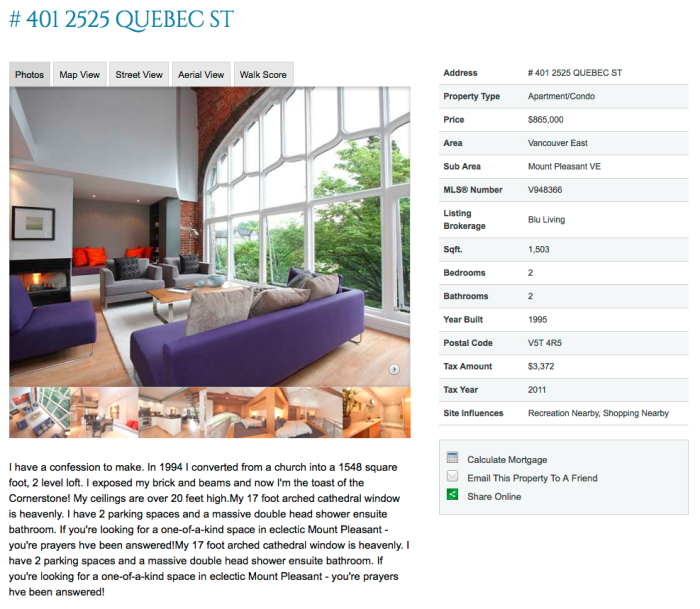Types of Real Estate Listings

The real estate market encompasses a diverse range of property types, each with its own unique characteristics and investment considerations. Understanding these distinctions is crucial for both buyers and sellers to navigate the market effectively and make informed decisions. This section Artikels the primary categories of real estate listings, highlighting their key features and providing illustrative examples.
Residential Real Estate
Residential real estate includes properties designed for residential purposes, encompassing single-family homes, multi-family dwellings, condominiums, townhouses, and cooperative apartments. These properties are primarily purchased for personal use as primary residences, secondary homes, or investment properties.
| Type | Description | Key Features | Examples |
|---|---|---|---|
| Single-Family Home | A detached house on its own lot, typically offering privacy and individual ownership of the land. | Private yard, multiple bedrooms and bathrooms, garage, potential for customization. | A three-bedroom, two-bathroom house with a fenced yard and a two-car garage located in a suburban neighborhood. |
| Multi-Family Home | A building containing multiple separate residential units, often generating rental income. | Multiple units, potential for rental income, shared amenities (possibly). | A four-unit apartment building with individual units rented to tenants, located in an urban area with high rental demand. |
| Condominium | Individually owned units within a larger building or complex, with shared ownership of common areas. | Shared amenities (pool, gym, etc.), lower maintenance responsibilities compared to single-family homes. | A two-bedroom condo in a high-rise building with access to a rooftop terrace and a fitness center. |
| Townhouse | Multi-story homes that share one or more walls with adjacent units, often featuring a private entrance and small yard. | Attached housing, typically less maintenance than a single-family home, shared common areas (possibly). | A three-story townhouse with a private patio and attached garage, located in a planned community. |
| Cooperative Apartment | A unit in a building owned by a corporation, where residents own shares in the corporation and have the right to occupy a specific unit. | Shared ownership, monthly fees, strict rules and regulations. | A one-bedroom cooperative apartment in a historic brownstone building, with access to a shared laundry room. |
Commercial Real Estate
Commercial real estate comprises properties used for business purposes, including office buildings, retail spaces, industrial properties, and hotels. These properties are typically purchased for investment purposes or to house a business operation.
| Type | Description | Key Features | Examples |
|---|---|---|---|
| Office Building | A structure designed to house multiple businesses or offices. | Multiple office spaces, shared amenities (reception area, restrooms), potential for high rental income. | A ten-story office building in a downtown business district, offering modern amenities and high-speed internet access. |
| Retail Space | Properties designed for the sale of goods or services to the public. | High foot traffic, prominent location, adaptable floor plans. | A storefront retail space in a busy shopping mall, suitable for a clothing boutique or a coffee shop. |
| Industrial Property | Properties used for manufacturing, warehousing, or distribution. | Large floor space, high ceilings, loading docks. | A warehouse facility with ample storage space and loading docks, located near major transportation routes. |
| Hotel | A building providing lodging and hospitality services to guests. | Multiple guest rooms, amenities (pool, restaurant, etc.), potential for high revenue generation. | A luxury hotel with a spa, fitness center, and multiple dining options, located in a popular tourist destination. |
Land
Land listings involve the sale of undeveloped or partially developed parcels of land. These can range from small residential lots to large commercial or agricultural tracts. The value of land is largely determined by its location, zoning regulations, and potential for development.
| Type | Description | Key Features | Examples |
|---|---|---|---|
| Residential Lot | A parcel of land zoned for residential development. | Size, location, utilities availability. | A half-acre lot in a new suburban development, ready for the construction of a single-family home. |
| Commercial Land | A parcel of land zoned for commercial development. | Size, location, zoning regulations, proximity to transportation routes. | A five-acre parcel of land zoned for retail development, located near a major highway. |
| Agricultural Land | Land used for farming or agricultural purposes. | Soil quality, water access, size. | A 100-acre farm with fertile soil and access to irrigation, suitable for growing crops. |
Marketing and Distribution of Listings

Effectively marketing a real estate listing is crucial for a successful sale. Reaching the right buyers at the right time requires a multi-pronged approach, utilizing various channels to maximize exposure and generate leads. This section details the most common marketing and distribution channels, their respective advantages and disadvantages, and strategies for optimizing online visibility.
Marketing Channels for Real Estate Listings
Choosing the right marketing channels depends on factors such as budget, target audience, and property type. A well-rounded strategy typically incorporates a mix of online and offline methods.
- Online Portals: Websites like Zillow, Realtor.com, Trulia, and others are essential for reaching a broad audience of potential buyers. These platforms often have sophisticated search functions and attract high traffic. However, competition can be fierce, and paid advertising may be necessary to gain prominence.
- Social Media Marketing: Platforms like Facebook, Instagram, and even TikTok can be effective for showcasing properties visually. High-quality photos and videos are crucial. Targeted advertising allows focusing on specific demographics and interests. However, organic reach can be limited, and consistent engagement is required to maintain visibility.
- Print Media: While less prevalent than online channels, print media, such as local newspapers and community magazines, can still be relevant, particularly for targeting a specific geographic area. It offers a tangible and established presence. However, the reach is more limited, and the cost per impression is generally higher compared to online advertising.
- Email Marketing: Building an email list of potential buyers and staying in touch with them via newsletters or targeted property alerts can be highly effective. This allows for direct communication and personalized messaging. However, maintaining a compliant email list and avoiding spam filters is crucial.
- Direct Mail Marketing: Targeted mailers to specific neighborhoods or demographic groups can still be effective, especially for luxury properties. It offers a personal touch. However, it can be expensive and requires careful targeting to avoid wasted resources.
Optimizing Listings for Online Search Engines ()
Search engine optimization () is crucial for improving online visibility. Key strategies include:
- Research: Identifying relevant s and phrases that potential buyers use when searching for properties (e.g., “luxury condo downtown,” “family home with large yard”).
- High-Quality Photos and Videos: Professional, high-resolution images and engaging videos are essential for attracting viewers and conveying the property’s features.
- Compelling Property Descriptions: Writing detailed and accurate descriptions that highlight key features and benefits, using relevant s naturally within the text.
- Accurate and Complete Listing Information: Ensuring all listing details are accurate and complete, including address, square footage, number of bedrooms and bathrooms, etc.
- Local Citations: Listing the property on relevant local directories and business listings to improve local search ranking.
Effectiveness Ranking of Marketing Channels
It’s difficult to assign a definitive ranking, as effectiveness depends heavily on the specific property, target market, and budget. However, a generally effective strategy would prioritize:
- Online Portals (with paid advertising as needed): Reach a vast audience.
- Social Media Marketing (with targeted advertising): Visual appeal and targeted reach.
- Email Marketing: Direct communication and personalized messaging.
- Print Media (for niche markets or local focus): Targeted reach within a specific geographic area.
- Direct Mail Marketing (for luxury or specific target groups): Personalized and tangible approach, but potentially expensive.